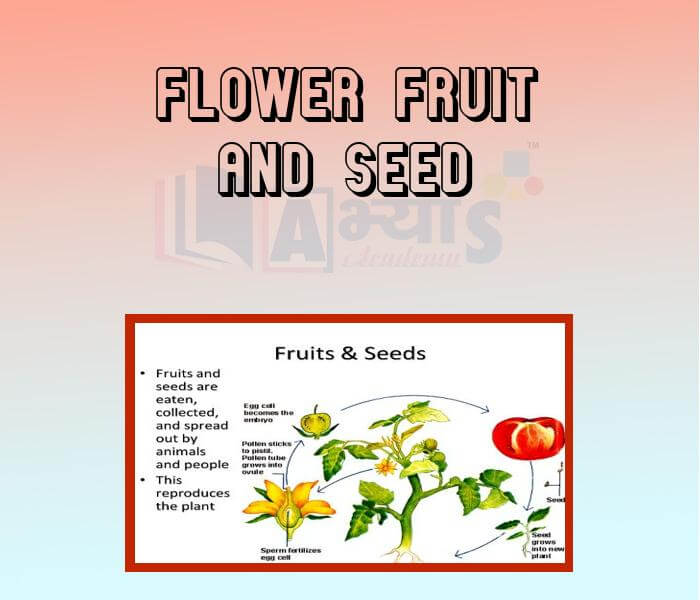Flower Fruit and Seed











Flower Fruit and Seed
Seed Formation:
After Fertilisation, the zygote grows to become an embryo. The embryo develops into a seed ( mature ovule) while the surrounding ovary develops into a fruit. The embryo consists of a plumule, radicle and an embryonic axis to which two fleshy cotyledons are attached. The cotyledons store food for the embryo. Seeds are attached to the fruits by a stalk. The stalk on maturity becomes detached and leaves a scar called hilum. Seeds are covered by a protective layer called the seed coat. When a seed gets suitable temperature, air and water, it germinates and grows into a new plant. This process is called germination. The plumule develops into the shoot system whereas the radicle grows as the root system.
Fruit Formation:
The ovary grows into a fruit. The fruit is actually a ripened and mature ovary, generally sweet, juicy or pulpy. It encloses seeds. Some fruits are fleshy and juicy such as mango, apple, peach, orange, etc. Almonds and walnuts have hard and woody shell of nuts. These are the examples of hard fruits or dry fruits. After fertilization the ovary enlarge to from the fruit.
The reproductive part of a plant is the _______________ | |||
| Right Option : D | |||
| View Explanation | |||
_______________ does not have seeds? | |||
| Right Option : D | |||
| View Explanation | |||
Which of the following is the reproductive organ in a plant ? | |||
| Right Option : D | |||
| View Explanation | |||
Students / Parents Reviews [10]
My experience with Abhyas academy is very good. I did not think that my every subject coming here will be so strong. The main thing is that the online tests had made me learn here more things.

Hiya Gupta
8thA marvelous experience with Abhyas. I am glad to share that my ward has achieved more than enough at the Ambala ABHYAS centre. Years have passed on and more and more he has gained. May the centre flourish and develop day by day by the grace of God.

Archit Segal
7thMy experience was very good with Abhyas academy. I am studying here from 6th class and I am satisfied by its results in my life. I improved a lot here ahead of school syllabus.

Ayan Ghosh
8thAbout Abhyas metholodology the teachers are very nice and hardworking toward students.The Centre Head Mrs Anu Sethi is also a brilliant teacher.Abhyas has taught me how to overcome problems and has always taken my doubts and suppoeted me.

Shreya Shrivastava
8thAbhyas is a complete education Institute. Here extreme care is taken by teacher with the help of regular exam. Extra classes also conducted by the institute, if the student is weak.

Om Umang
10thIt was good as the experience because as we had come here we had been improved in a such envirnment created here.Extra is taught which is beneficial for future.

Eshan Arora
8thIt has a great methodology. Students here can get analysis to their test quickly.We can learn easily through PPTs and the testing methods are good. We know that where we have to practice

Barkha Arora
10thIt was a good experience with Abhyas Academy. I even faced problems in starting but slowly and steadily overcomed. Especially reasoning classes helped me a lot.

Cheshta
10thBeing a parent, I saw my daughter improvement in her studies by seeing a good result in all day to day compititive exam TMO, NSO, IEO etc and as well as studies. I have got a fruitful result from my daughter.

Prisha Gupta
8thAbhyas Methodology is very good. It is based on according to student and each child manages accordingly to its properly. Methodology has improved the abilities of students to shine them in future.
